Published on . Updated on . By Tayo. This post may contain affiliate links. See Disclosure. 23 Comments
Ofada stew, also known as ayamase stew or designer stew, is a delectable Nigerian stew made with palm oil, fermented locust beans, and bell peppers. Serve with cauliflower rice for a delicious African keto lunch or dinner!
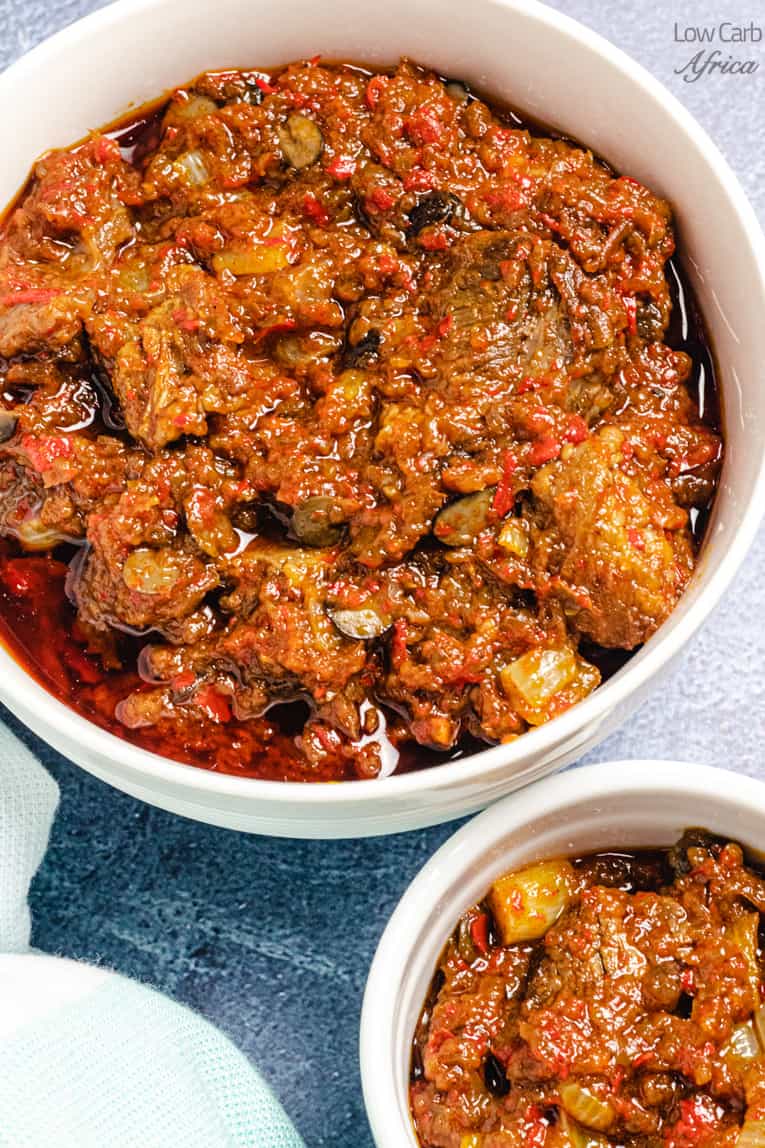
Want to Save This Recipe?
Enter your email & I’ll send it to your inbox. Plus, get great new recipes from me every week!
By submitting this form, you consent to receive emails from Low Carb Africa.
Ofada stew actually borrows its name from the type of rice it was originally served with, known as Ofada Rice.
Ofada rice is an aromatic variety grown in parts of Nigeria. It has a more robust flavor than regular rice because part of the rice bran is left on the grain.
I will never forget the first time I tasted ofada stew. If you’ve ever tasted it, you’ll understand my sentiment. The taste is one you don’t forget easily.
Ofada stew has a very unique and addictive flavor. The taste is refreshing and comforting, and there is a real chance you’ll eat way more than you intended!
Ingredients Used
The following are affiliate links. We are a participant in the Amazon Services LLC Associates Program, an affiliate advertising program designed to provide a means for us to earn fees by linking to Amazon.com and affiliated sites.
- Green and red bell peppers: I have tasted ofada stew made with only green bell peppers and made with only red bell peppers. I personally prefer a combination of both, but you can mix and match as you see fit. Or use what you have on hand. I use a ratio of 3 green to 1 red bell pepper.
- Palm oil: Palm oil gives ofada stew its unique taste, especially when bleached (more on that later).
- Habanero pepper: The traditional ofada stew is made with scotch bonnet peppers, but you can use them interchangeably.
- Iru (fermented locust beans): I use iru in some of my African soups, like my okro soup recipe. It is quite popular in Nigerian soups and gives a traditional umami flavor when added in small quantities. You can omit this if you don’t have any on hand.
- Meat: I used beef for this, but you can also use goat meat or chicken.
- Spices: Bouillon powder, salt, and ground crayfish.
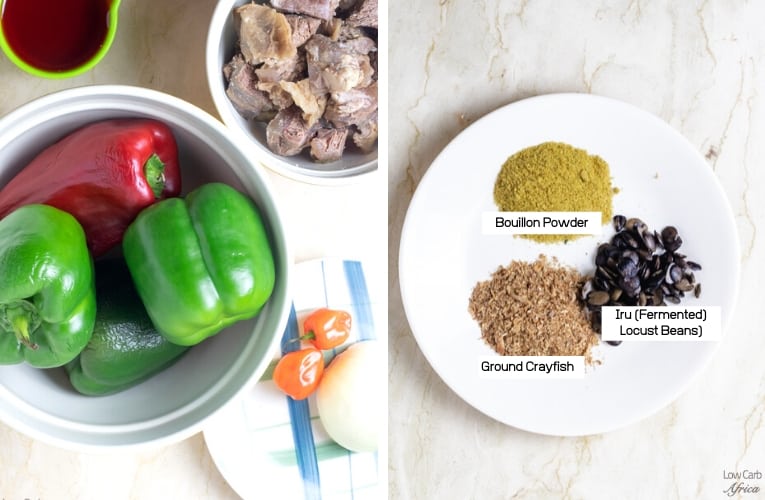
How to bleach palm oil
Bleaching palm oil might sound strange, but this is quite common in many West African cuisines. It involves heating the palm oil till it loses its red color (and turns a light orange hue).
Why bleach palm oil in the first place? Palm oil is bleached because some very traditional dishes rely on bleached palm oil for their unique flavors.
You can make the same dishes without bleaching the oil, but the taste will be very different. This ofada stew is one of those dishes.
Bleaching palm oil is quite straightforward to make if you know how to do it right. If done improperly, you might end up with a smoking kitchen and a screaming fire alarm!
To bleach palm oil, pour it into a pot, turn the heat down to low, then COVER the pot with a lid. The last part is essential as this will prevent a smoking kitchen.
If you have a stove fan, turn it on. Also, make sure the kitchen is well-ventilated.
Then set a timer. I only bleach mine for 5 minutes, but you can do it safely for up to 10 minutes.
Turn off the heat when done and cool for another 5 minutes before opening the cover to prevent splashes.
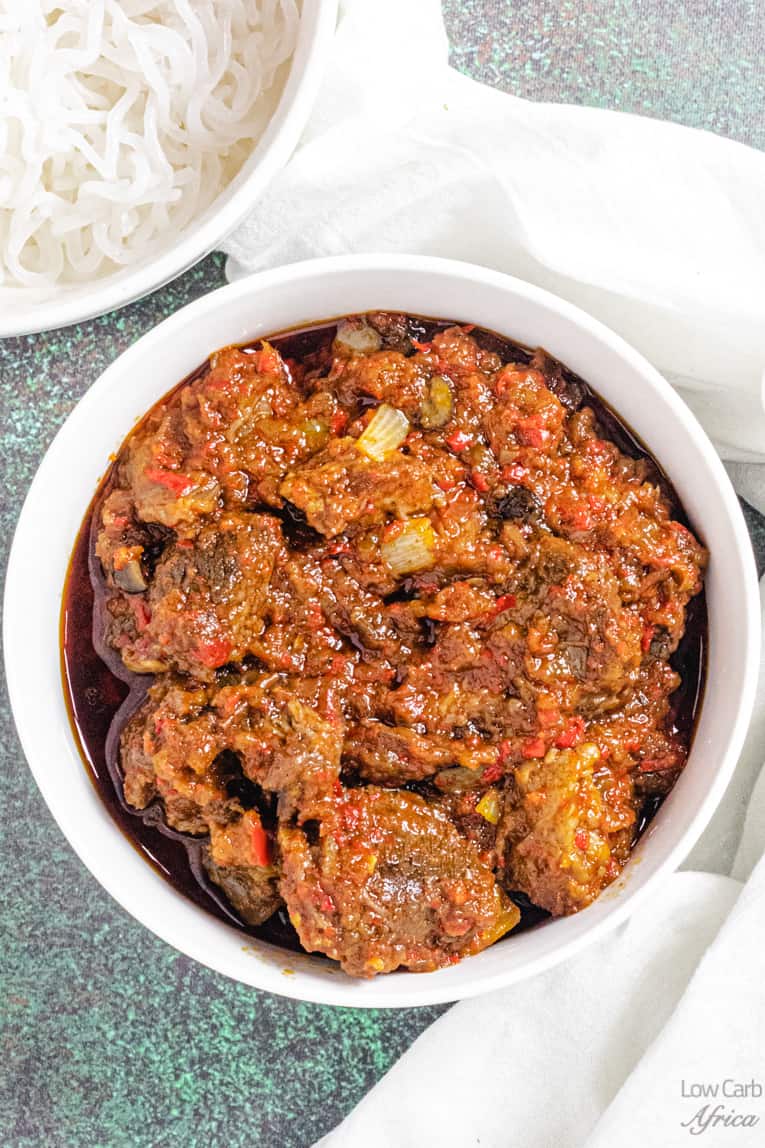
How to make ofada stew (ayamase stew)
Start by preparing the meat you want to use. If using beef, boil it with salt, bouillon, and black pepper for 30-40 minutes until tender. You can even fry the meat to give it a more authentic taste, but it’s optional.
- Bleach the oil as outlined above. While waiting, coarsely blend the habanero peppers and the bell peppers together.
- Add as little water as possible when blending. If the blended mix looks a bit watery, pour it into a pot and let it boil till some of the water evaporates.
- Chop the onions and set them aside. Add the onions to the palm oil and when translucent, pour in the blended peppers and add the iru (fermented locust beans). Cover and let it cook for about 5 minutes.
- Make sure it’s on medium heat and keep an eye on it, so it does not burn. Add your choice of meat and the remaining spices. Taste for salt and adjust accordingly.
- Cook for another 10 minutes on medium heat or until the oil begins to float to the top.
- Your ofada stew is ready to serve!
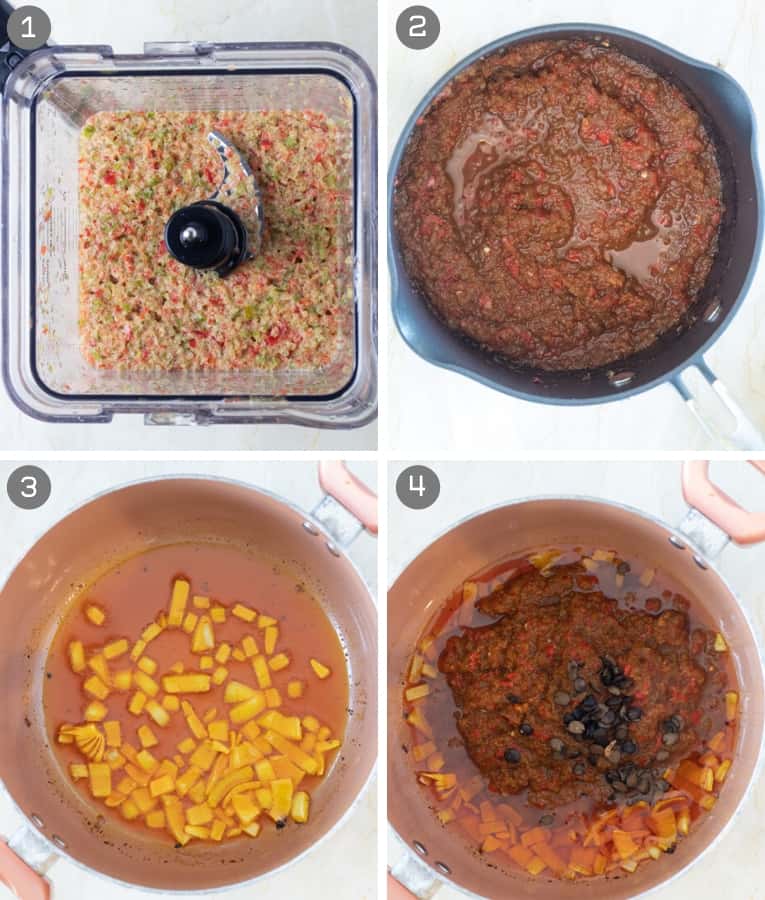
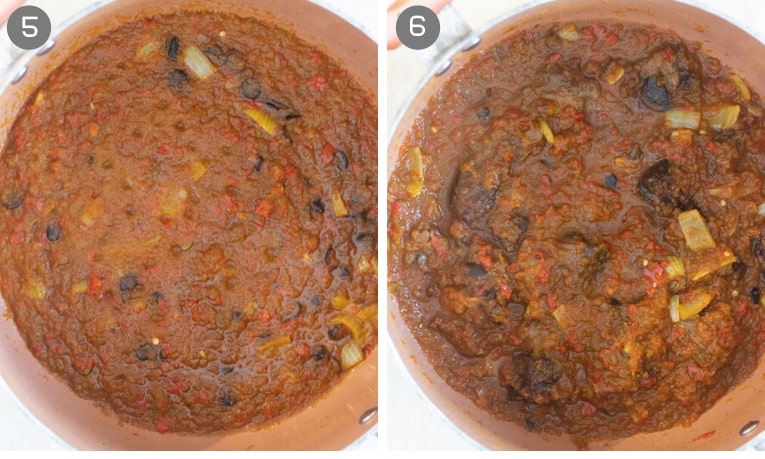
What can I eat with ofada stew?
Ofada stew is commonly served over rice, but for a low-carb option, serve with cauliflower rice or plain shirataki noodles.
Basically, you can use ofada stew in any meal that calls for stew.
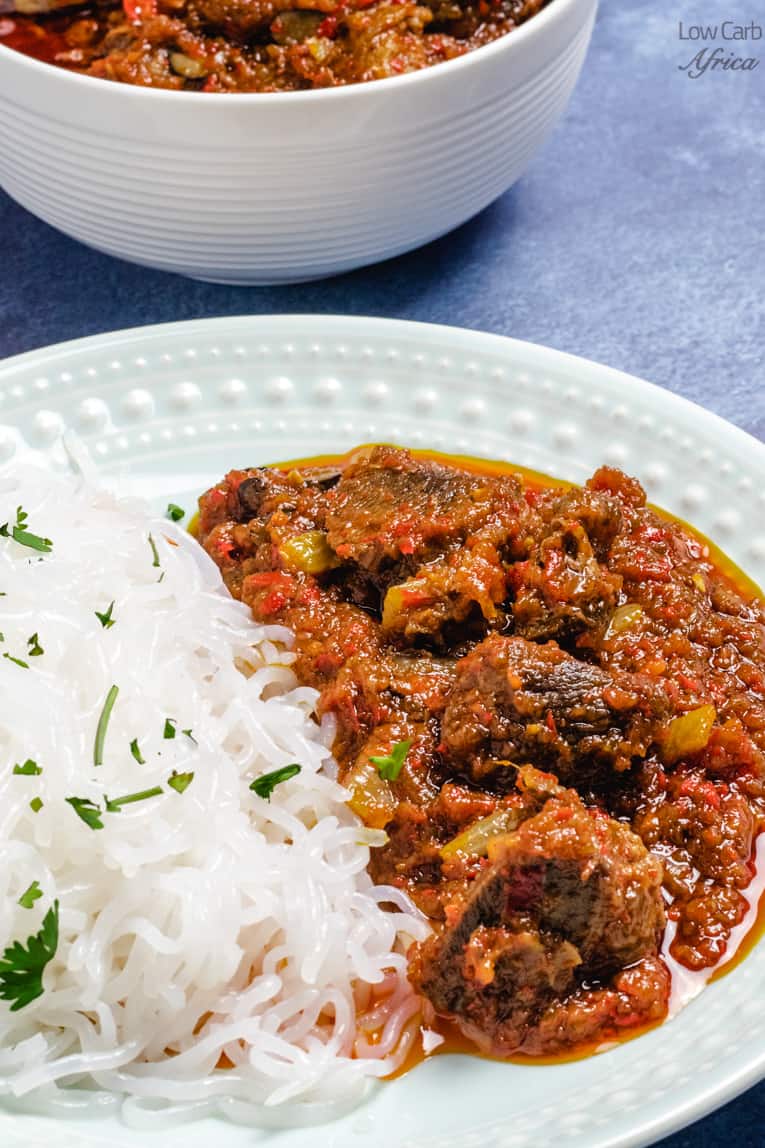
Tips when making ofada stew
- You can reduce the habanero pepper if it’s too spicy or add more if you prefer.
- You don’t have to bleach the palm oil, but doing so will really enhance the taste.
- You can use a mixture of green and bell peppers or just one type. Red bell peppers are generally a bit sweeter.
Related Recipes
Enjoy these other delectable African stews!
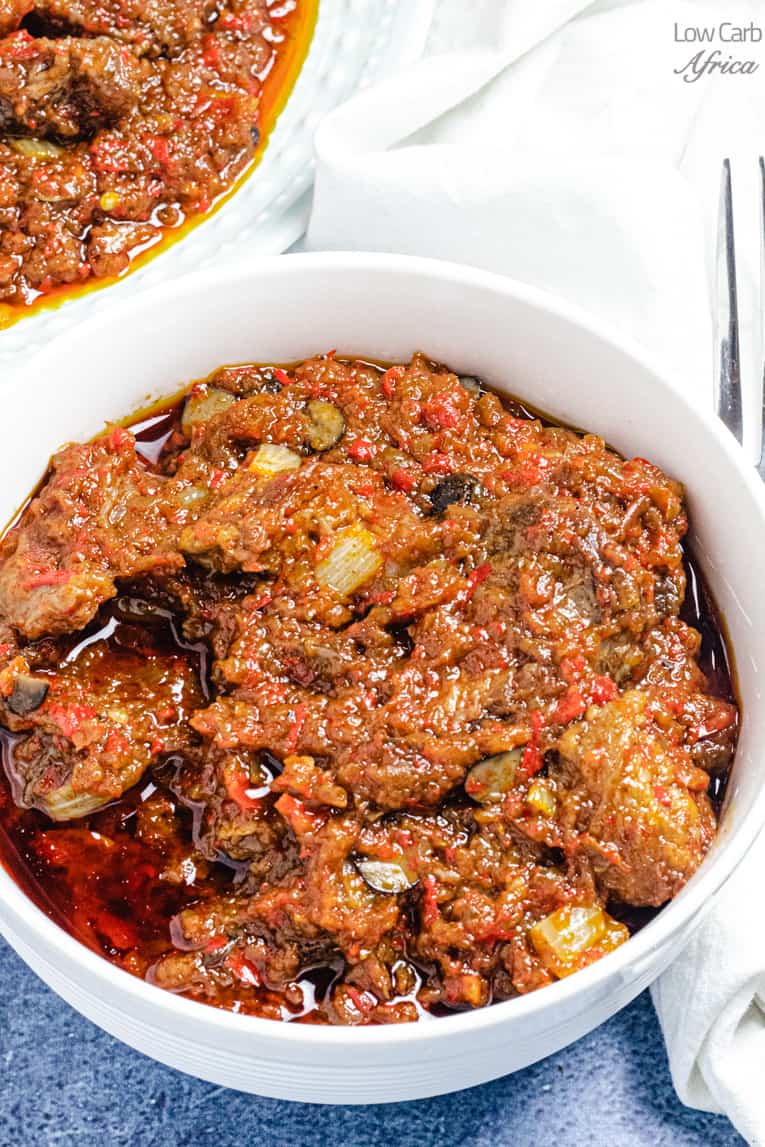
📖 Recipe
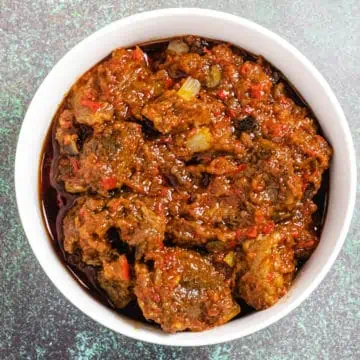
Ofada Stew (Ayamase Stew)
Ofada stew, also known as ayamase stew or designer stew, is a delectable Nigerian stew made with palm oil, iru, green, and red bell peppers. Serve with cauliflower rice for a delicious African keto lunch or dinner!
Print
Pin
SaveSaved!
Servings:6
Calories:184kcal
Prevent your screen from going dark
Instructions
Chop the onions.
½ onion
Coarsely blend the bell peppers and habanero peppers.
3 green bell peppers,1 red bell pepper,2 habanero peppers
If the blended mix looks a bit watery,pour in a pot and let it boil till some of the water evaporates.
Boil the beef with bouillon powder,black pepper,and salt till it is tender.
1 teaspoon bouillon powder,1 teaspoon salt,12 oz beef,1 teaspoon black pepper
Bleach the palm oil (as outlined in the next section).
¼ cup palm oil
Add the onions,and after about a minute,add the blended pepper mix and iru.
1 tablespoon iru
Cook for about 5 minutes.
Add the beef and spices.
1 teaspoon bouillon powder,1 teaspoon salt,1 tablespoon ground crayfish
Cook for another 10 minutes on medium-low heat or till the oil begins to rise to the surface.
Serve and enjoy!
To Bleach the Palm Oil
Pour the palm oil into a pot,turn the heat down to low,then COVER the pot with a lid.
If you have a stove fan,turn it on. Also,make sure the kitchen is well ventilated.
Set a timer and let it heat up for 5 minutes (still covered and on low heat).
Turn off the heat when done and cool for another 5 minutes before opening the cover.
Notes
- You can reduce the habanero pepper if it’s too spicy or add more if you prefer.
- You don’t have to bleach the palm oil,but doing so will really enhance the taste.
- You can use a mixture of green and red bell peppers or just one type. Red bell peppers are generally a bit sweeter.
Nutrition
Calories:184kcal| Carbohydrates:4g| Protein:11g| Fat:14g| Saturated Fat:4g| Cholesterol:40mg| Sodium:515mg| Potassium:310mg| Fiber:1g| Sugar:2g| Vitamin A:873IU| Vitamin C:78mg| Calcium:16mg| Iron:1mg

